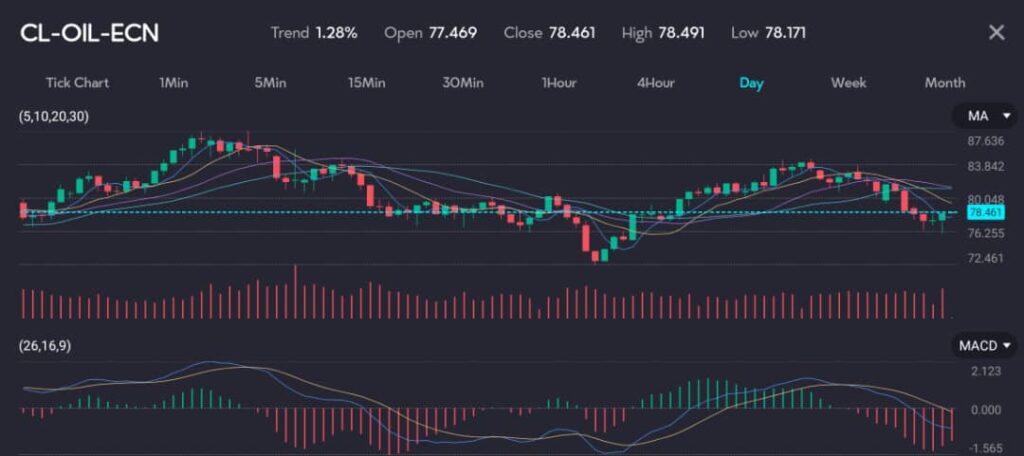Key points:
- US GDP growth of 2.8% in Q2 surpasses expectations, fueling optimism for higher crude oil demand.
- Economic struggles in China and Japan cap oil price gains, despite easing inflation pressures in the US.
Oil prices experienced a modest rise on Friday, driven by stronger-than-expected US economic data. This raised hopes for increased crude oil demand from the world’s largest energy consumer. However, lingering economic challenges in China and Japan limited the extent of these gains.

See: Oil sees a slight increase on the VT Markets app.
Brent crude futures for September increased by 7 cents, reaching $82.44 per barrel as of 0014 GMT. Similarly, US West Texas Intermediate (WTI) crude for September rose by 4 cents, hitting $78.32 per barrel.
Read: Oil prices finding a balance between slowing demand and tightening supply
US economy surpasses growth expectations, driving potential oil demand
The US economy grew at an annualised rate of 2.8% in the second quarter, exceeding economists’ expectations of 2.0%. This growth was driven by higher consumer spending and increased business investments, according to Commerce Department data. The robust economic performance suggests a potential rise in oil demand as economic activities expand.
Inflation pressures in the US have eased, supporting the expectation that the Federal Reserve may proceed with an interest rate cut in September. Lower interest rates typically stimulate economic activity, which can boost oil demand further.
Japan’s inflation data suggests mixed economic outlook
In Japan, core consumer prices in Tokyo increased by 2.2% year-on-year in July. This data has heightened expectations of a possible interest rate hike. However, an index that excludes energy costs showed the slowest annual rise in nearly two years, indicating that price increases are moderating due to weak consumption. This mixed inflation data points to an uncertain economic outlook in Japan.
China, the world’s largest crude oil importer, conducted an unexpected lending operation on Thursday at significantly lower rates, hinting at intensified efforts to provide monetary stimulus and support the economy.
This move follows a series of measures aimed at propping up growth amid ongoing economic challenges.
US GDP growth boosts oil demand outlook
The stronger-than-expected GDP growth in the US bodes well for crude oil demand. If the Federal Reserve cuts interest rates in September, it could further boost economic activity and oil consumption. However, the mixed economic signals from Japan and the aggressive monetary easing in China create a complex picture.
While Japan’s moderate price increases could limit oil demand, China’s stimulus efforts might eventually spur demand if successful in stabilising growth.
You might be interested: Who is OPEC and why are they important in oil trading?
In summary, while US economic strength is a positive driver for oil prices, the uncertainties in Asian markets, particularly in China and Japan, continue to exert a limiting effect on potential gains. Traders and investors should keep a close eye on further economic developments in these regions to gauge future oil market trends.
Start trading now — click here to create your live VT Markets account.









